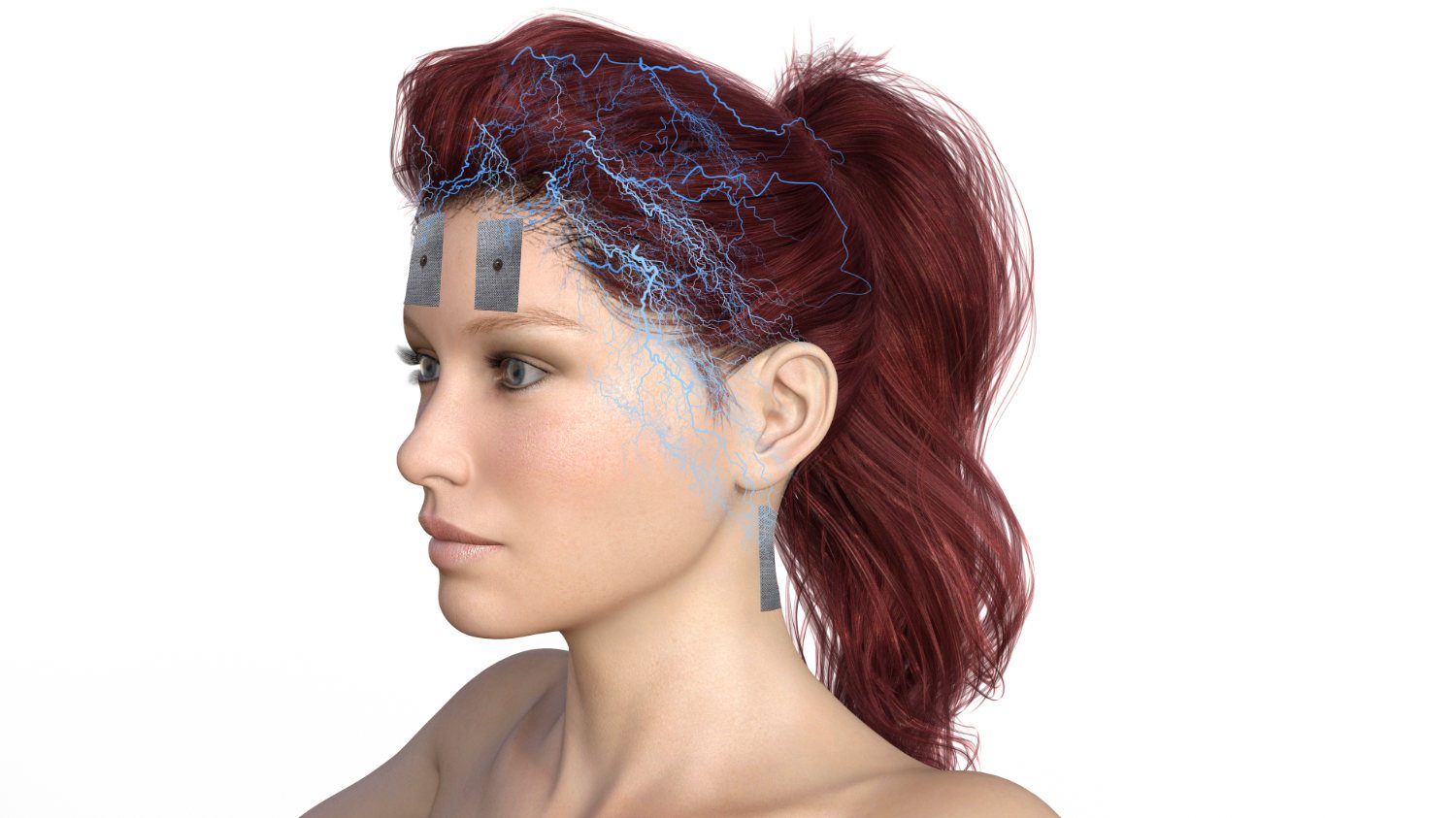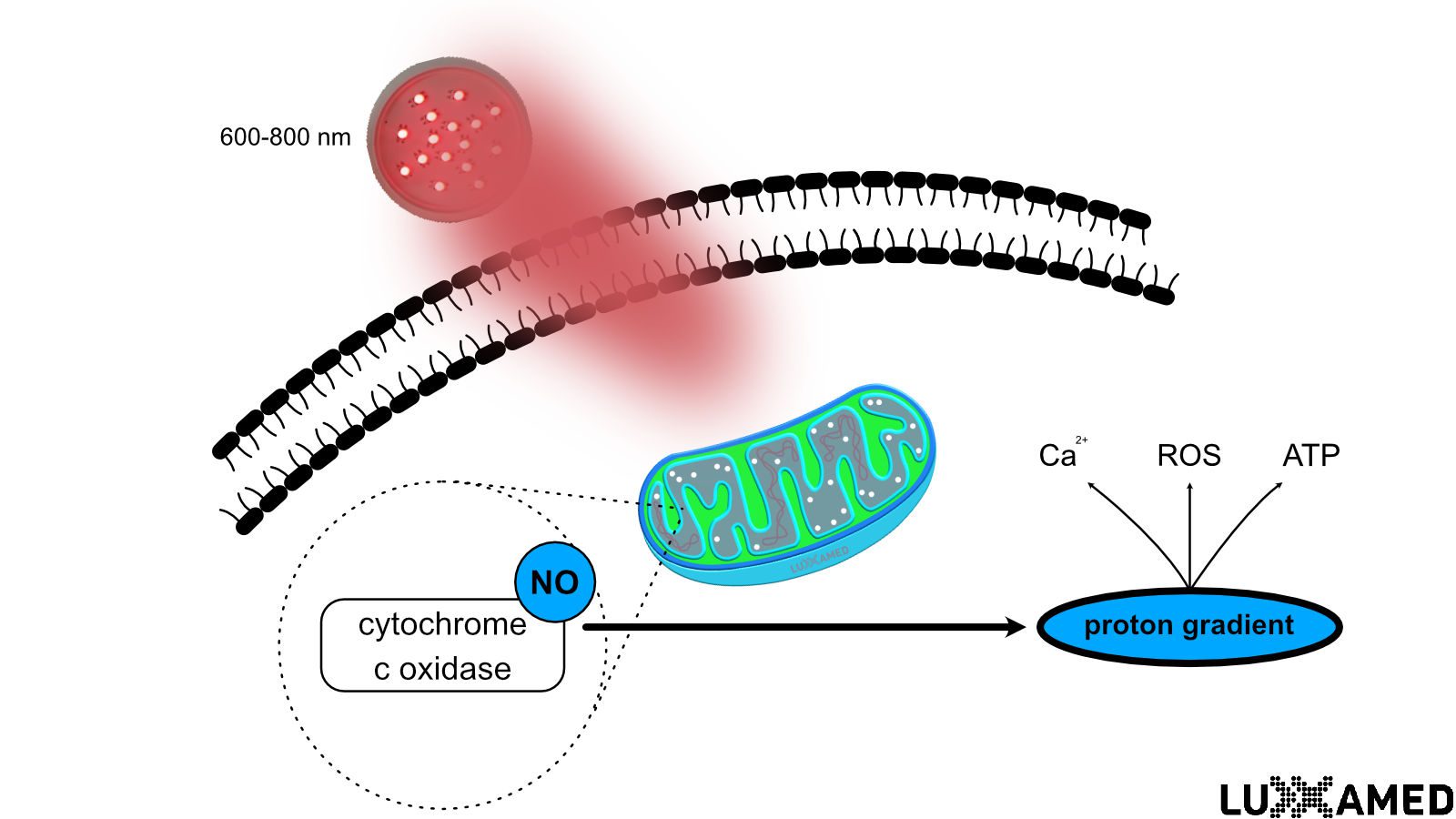Dieser Beitrag ist auch verfügbar auf:
![]() Deutsch
Deutsch
Therapeutic approach in pain therapy with microcurrent therapy and LED light therapy
The therapy of acute and chronic complaints with microcurrent therapy has been used in the USA since the 1970s. Studies like Cheng et al. (1982) show that currents of< 500 µA are able to positively influence the cell metabolism and the concentration of ATP in the tissue. Compared to classic electrotherapeutic methods, which mostly work with currents of more than 5 mA, microcurrent therapy is able to achieve a five-fold increase in the ATP concentration in the optimal case. (CHENG et al., 1982, p. 6)
Derived from this, microcurrent therapy can be described as regulatory medicine. Stacher (1997) draws an analogy with a theory from physics. He introduces chaos theory here to explain the complexity of regulatory medicine. The human organism is an open thermodynamic system that is dependent on external influences. Open thermodynamic systems require external energy and are therefore unequal to an equilibrium. From this it can be deduced that the regulative approach of the human organism is that it is dependent on auto-regulation. This condition can be described physiologically with the term. (Stacher, 1997)
This form of pain therapy has also been used in Germany since 2000. Mikus et al. (2003) described the use of frequency-modulated microcurrent therapy in Sudeck’s disease. The therapy was examined in 83 patients. The outcome of the study shows a significant effect with a frequency variation between 5 and 20 Hz. The parameters mobility, pain, redness and swelling could be highly significant (p = 0.0014 to> 0.0001) can be influenced. (Mikus, Tietz & Dertinger, 2003, p. 31)
Rockstroh et al. (2010) published results of a randomized clinical study in patients after knee replacement surgery. In the study, which was masked on the patient side, the three-month follow-up examination showed that the microcurrent therapy group was found pain-free on average compared to the control group. (Rockstroh, Schleicher & Krummenauer, 2010)
The use of microcurrent therapy was investigated in 2017 at the Fraunhofer Institute FEP. The basis of this investigation was a microcurrent device from a German manufacturer, which had already examined a combination of microcurrent with LED light in previous studies. The results of the investigation provided evidence that microcurrent therapy is able to influence metabolic activities and cell proliferation. (Schönfelder, Walker & Kenner, 2017, p. 29)
Pain therapy is often equated with pharmaceutical methods. Orthopedic disorders of structure and function are seen as the fundamental pillars, but a third pillar, the metabolism, is left out. In many cases, pain therapy is limited to blocking / suppressing inflammatory processes. (Voracek, 2012, p. 366)
K Health conditions can be divided into three areas based on their heat emission and the associated energy balance:
– physiological,
– hypermetabolic
– and hypometabolic.
A physiological as well as a pathological state can thus be assessed through a metabolic consideration. (Voracek, 2012, p. 366)
“However, it is more advantageous to see most orthopedic clinical pictures in a context of structure, function and metabolism (including immunology) and to approach them therapeutically. “ (Voracek, 2012, p. 366) ÜThe metabolic processes in the tissue can be measured using feedback-controlled methods and controlled with microcurrent therapy. From a clinical point of view, this results in an increase in function and a reduction in pain. (Voracek, 2012, p. 367)
Conclusion
The brief paragraphs aptly describe the mode of action of microcurrent therapy. But the question remains, what is the mechanism behind the effect of microcurrents and what are the benefits of cybernetic methods or the combination with other therapeutic agents?
A sentence with a lot of questions and even more possible answers. But the attempt remains to find pragmatic solutions to the questions. Basically, it can be taken into account that microcurrent is still electricity and is therefore subject to physical laws such as Ohm’s law.
Now, as in a transmission, one can consider which adjusting screws are responsible for an effect (s):
· Amperage , which is measured in amperes (hence the name of microcurrent therapy, because microcurrent works at a current strength of less than one milli-ampere and is therefore specified in micro-amperes.)
· Tension, which is measured in volts (neither users nor some manufacturers give the slightest thought to this. The users because of it SEEMINGLY is not important and with the term MICRO probably has nothing to do with the manufacturer, because only a few experts know what the volts in combination with micro-amps actually do in the tissue or the cell.)
· Frequency, which is given in Hertz, i.e. in pulses per second (that’s exactly the HYPE in the MICROCURRENT -Scene. Everything is frequency and without frequency nothing works anyway. Frequencies must always be specific NO MATTER which state or even which stress the tissue is currently in. The main thing is that someone has declared a frequency as specific at some point. Mainly frequency, but then you could also use the 50 Hz from the socket? And actually has someone on his MICRO POWER DEVICE the oh so specific FREQUENCY measured whether it really arrives so specifically in the tissue and the cell ???)
· Polarity, which can be positive, negative and also bipolar. (There is actual research on this, but this completely eludes it FREQUENCY SPECIFIC MAINSTEAM )
On the one hand, measurements can be made. So before you say “everything is frequency”, you should measure validly and evaluate the results reliably. Of course, frequencies have an effect, but it becomes problematic when one puts an effect that of microcurrent therapy exclusively on that of frequencies and has often not carried out any measurements or investigations on it yourself. Especially when you say that a frequency is or should be specific. What does specific mean in this context?
Means specifically:
1. That the frequency is adapted to the current state in the tissue and that there is a simultaneous reaction to any situational changes?
2. Or that a frequency mentioned in the literature and used years ago is used and the specific label is simply reassigned?
Two good questions, aren’t they! You won’t find the answer to that in this article. You can come up with this on your own or you can simply take a specifically pre-developed answer to answer all questions :-).
bibliography
CHENG, N., van HOOF, H., BOCKX, E., HOOGMARTENS, MJ, MULIER, JC, DIJCKER, FJ de et al. (1982). The Effects of Electric Currents on ATP Generation, Protein Synthesis, and Membrane Transport in Rat Skin. Clinical Orthopedics and Related Research , &N / A; (171), 264-272. https://doi.org/10.1097/00003086-198211000-00045
Mikus, E., Tietz, U.-J. & Dertinger, H. (2003). Highly significant therapeutic success with frequency-modulated microcurrents of low intensity. Osteoporosis & Rheumatism News , 3 (03), 31-32.
Rockstroh, G., Schleicher, W. & Krummenauer, F. (2010). The benefit of microcurrent therapy applied during inpatient follow-up treatment in patients after implantation of a total knee replacement – a randomized, clinical study. The rehabilitation[Effectiveness of microcurrent therapy as a constituent of post-hospital rehabilitative treatment in patients after total knee alloarthroplasty – a randomized clinical trial] , 49 (3), 173-179. https://doi.org/10.1055/s-0029-1246152
Schönfelder, J., Walker, S. & Kenner, L. (2017). Effect of a new generation of devices on in vitro cell cultures. WP 3: Effect of microcurrent therapy on in vitro cell cultures (Frauenhofer FEP, ed.).
Stacher, A. (1997). Regulatory medicine. Research in Complementary Medicine, 4.Available at https://www.karger.com/Article/Pdf/210327
Voracek, V. (2012). New therapeutic approach for orthopedic diseases through biological stimulation of cells and tissues (BCR therapy) with metabolic-cybernetic algorithms. Orthopedic and trauma surgery practice , 1. (9), 366-367.




